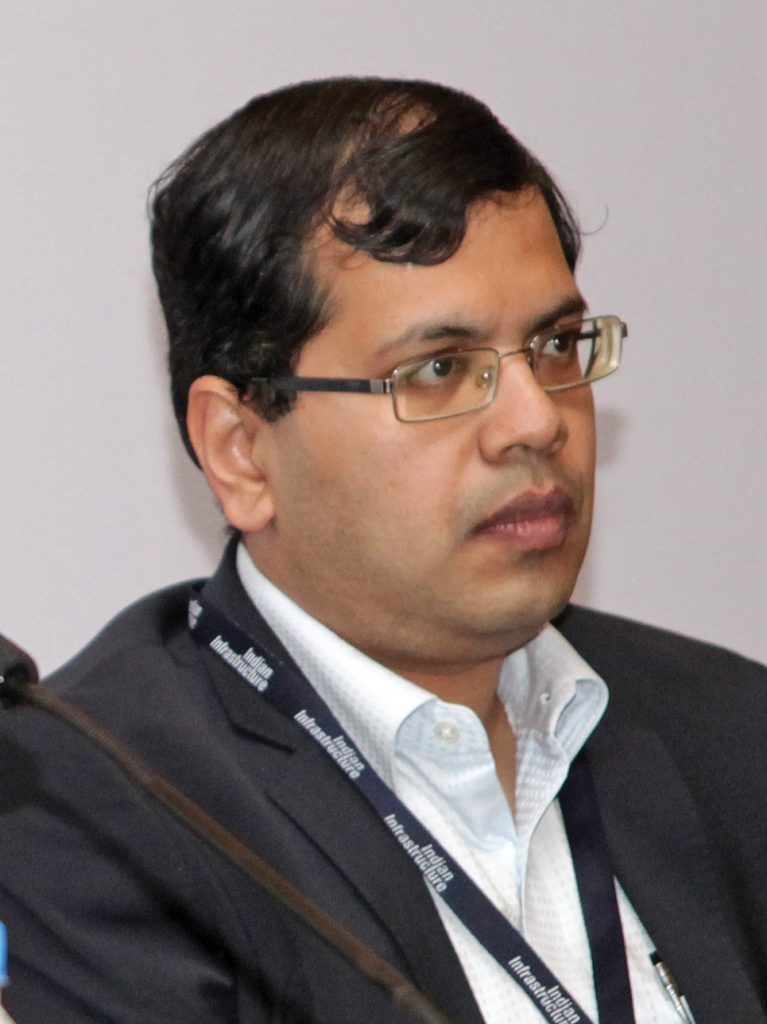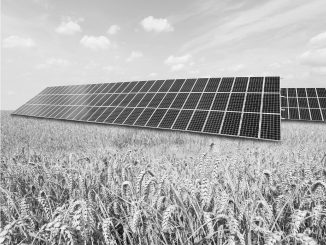
Solar power tariffs saw a steep decline in the recent Rewa Solar Park auction. While this is being seen as a significant achievement in the country’s solar growth story, industry stakeholders are wary of the sustainability of such low bids. In order to stay competitive, the entire supply chain including balance of system (BoS) suppliers are feeling the price pressure, leading to aggressive cost cutting and optimisation across the market. Industry stakeholders share their perspective on the current scenario and the sector outlook. Excerpts…
The solar market is very competitive and ultimately the entire value chain, including developers, and module and BoS suppliers, is not able to earn reasonable margins. While significant price pressure is felt by BoS suppliers, it is important that they maintain quality to ensure that plant is operational for a minimum period of 25 years. One of the main challenges with BoS suppliers is that in order to stay competitive, they prefer to pursue their own specifications. For instance, in our discussions with BoS suppliers, some companies have offered an alternating current and direct current (AC-DC) ratio of 1.45 to 1.50 for a few sites. While a high AC-DC ratio may reduce the overall fixed cost, it gives rise to challenges related to clipping losses, which reduces the final generation. Subsequently, the internal rate of return also goes down. Hence, it is important to optimise the project in terms of the AC-DC ratio.
Another important factor is the structural design of the project. Based on the wind zone that the site is located in, an increase of up to Rs 0.4 million-Rs 0.5 million per MW may be incurred. While this is a significant addition to the BoS cost, it is essential to incur it in order to ensure that the project is of high quality. The quality benchmark should be similarly followed at every component level including modules. In addition, it is important that the BoS supplier, the equipment supplier or the engineering, procurement and construction (EPC) company ensures environmental, health and safety (EHS) compliance and follows high quality labour practices. We ensure that every company we award a contract to follows international-level EHS practices for the well-being of its employees as well as subcontractor employees.
In terms of capital cost, a solar power plant is divided into two key parts – modules and BoS. The latter is a very important but complex aspect owing to the number of small components it involves and their impact on overall plant efficiency.
The current trend of rapidly decreasing solar power tariffs is putting immense pressure on module manufacturers and BoS suppliers. For a developer, once the tariff is locked, it is a tough task to achieve the target cost. With module prices for projects being fixed, there is immense pressure on the BoS side for cutting costs. It is essential that while achieving the target, the quality of components is not compromised. There has to be a balance between the cost, quality and reliability of the BoS component, especially considering the fact that these projects have a lifespan of 25 years.
Amongst various components, inverters are generally considered the heart of the BoS. Specifications such as the type and efficiency of the inverter play a very important role in deriving the maximum output from a solar power plant. In recent times, a number of developments have been seen in the inverter space. For instance, the size of the central inverter used in the plant has increased from 200-250 kW to as high as 2.5 MW. As per our experience, an increase in the size of the inverter leads to reduction in costs on account of a reduction in other electrical components. However, in case of a failure, using a larger capacity inverter will lead to a much higher generation loss.
An important concept with respect to inverters, which is seen in countries such as the US but is not yet prevalent in India, is the usage of 1,500 volts (V) systems. This is advantageous as one can optimise the DC losses as well as costs. In India, leaving aside a few manufacturers, most of the inverters are still at 1,000 V systems.
First Solar as a developer has undertaken a 50 MW AC project with SMA inverters in Telangana, using the 1,500 V system. A number of advantages were observed as far as overall BoS optimisation is concerned. Considering this, going forward, the industry should aim to move towards a 1,500 V system as this will provide the opportunity to further optimise overall BoS costs, without compromising on quality. At present, a significant percentage of modules are not compliant with the 1,500 V system. Additionally, there is limited availability of other components such as combiner boxes and 1,500 V system inverters. On account of these issues, the cost advantage is not yet visible in India.
Another important component of BoS is mounting structures. In an effort to optimise BoS costs, the weight of mounting structures has reduced significantly. While optimisation is good, it has to be undertaken keeping in mind appropriate design and structural requirements. If the structure is not properly designed, a failure may lead to a much higher loss on account of structure costs as well as generation losses.
With respect to tracker technology, single-axis trackers are quite common, especially in the US where 80 per cent of the projects are on single-axis trackers. The trend is catching up in India as well. Single-axis tracker technology is well proven and most of the trackers have more than 99 per cent uptime. The installation of modules on trackers can provide an energy gain of up to 15-20 per cent. An important point to note is that the land requirement goes up with the use of tracker systems as they require higher row-to-row spacing as compared to fixed-tilt structures. Hence, the cost of land may become a constraint in using trackers in a project. Lastly, there is a need for improving the supervisory control and data acquisition (SCADA) system. At present, we are lagging in terms of real analytical capability. In order to improve the efficiency of projects, it is essential to install a good SCADA system that can provide a comprehensive analysis and comparison at the inverter, string and input levels.
In a short period of 10 months, the EPC target price has gone down from Rs 50 million to Rs 35 million per MW. Price pressure is the biggest challenge currently being faced by the industry. With the continuously falling solar prices, what is being missed out is the sustainability of these tariffs. Along with setting up a project at the lowest possible cost, it is important to maintain quality in order for the plant to be operational for a period of 25 years. At present, the main focus is on cost, but it is important to realise that cost and quality go hand in hand. In the past few years, module prices have seen a continuous decline. Considering this, as solar project costs go down, the price pressure is likely to shift to BoS component suppliers.
Going forward, the market has to grow while keeping both cost and quality in mind. In my experience, India is a very acquisition-cost-sensitive market and there is a huge need for us to move from being an acquisition cost to a total life-cycle cost market. Hence, every component supplier can aim to offer solutions that encompass more of the life-cycle and overall project needs rather than the specific component. For instance, for evaluating the installation of a single-axis tracker, the decision is made based on the cost per Wp. However, if the supplier can incorporate the land development aspect in the overall costing, it will provide an additional value proposition to the developer. Similarly, the inverter supplier can aim to look at the entire system configuration and not the inverter alone.
Today, one of the biggest challenges that the industry faces when trying to introduce a 1,500 V system is the limited availability of other components such as junction boxes and modules. Earlier, the module price difference between 1,000 V and 1,500 V systems was 1-2 cent, but now they are at similar price levels. Similarly, for the supply of inverters, most manufacturers are slated to begin their manufacturing April onwards, which will lead to a reduction in the cost of 1,500 V inverters. Thus, over a period of six months, there will be a capital cost reduction as well as extra energy generation of 0.3-0.4 per cent.
Another important aspect is the delivery timeline. Speedy execution is one of the key elements for the success of a solar project. With difficulties involved in the land acquisition process and a large number of approvals required for the same, reducing the project timeline from six months to four months without compromising the quality can mean huge cost savings for the developer. In this respect, there is a need to improve the timeline management by mounting structure manufacturers. Today, the module mounting structure market in India is a semi-organised one, with manufacturers failing to meet deadlines. They need to take cognisance of this, come up with robust timelines and stick to them.





